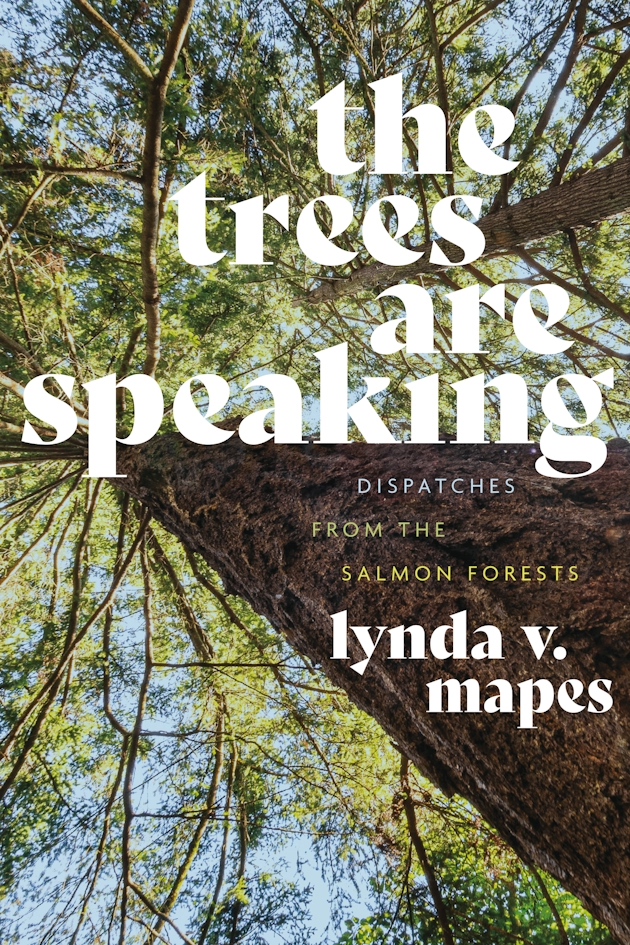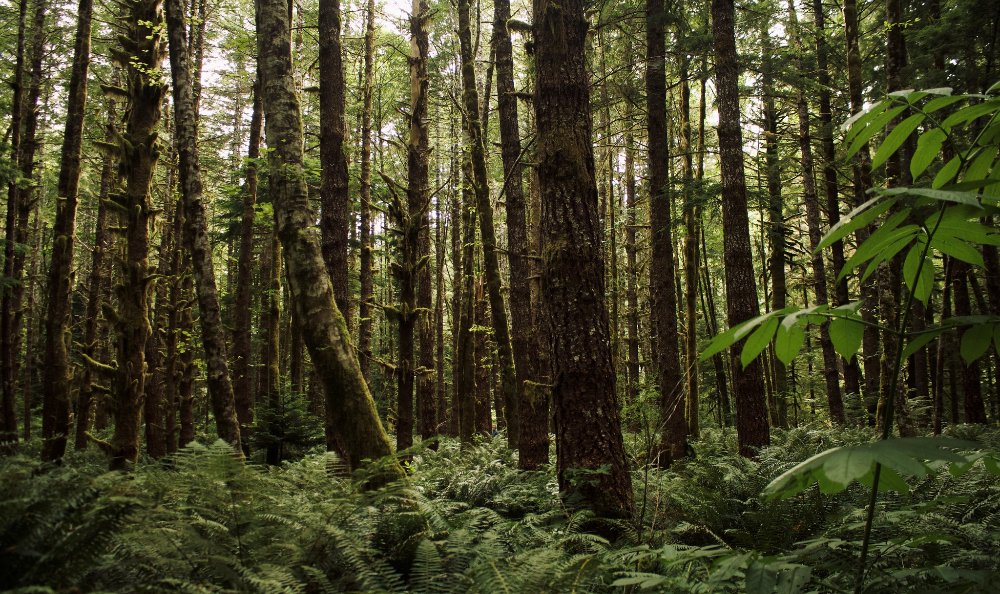A British Columbia cabinet minister and preacher, Phil Gaglardi, once evoked the Almighty in defending tree farm licenses in which the province gave pulp mills the right to ravage vast tracts of old growth forests.
God didn’t put those forests there to worship, said Gaglardi, but for man to chop down and use. Such was the philosophy of clear cuts, from our Olympic Peninsula to Vancouver Island to Prince of Wales Island in Southeast Alaska.
The consequences went far beyond scarred hillsides. Salmon spawning streams, even rivers named Clearwater, ran warm and muddy. Cutover lands do not hold water from fall storms. Industry treefarms sustain far less life.

In her new book Trees are Speaking: Dispatches from the Salmon Forest (University of Washington Press), author Lynda Mapes raises a passionate voice for protecting what’s left of our temperate rain forests. Trees have standing in her court.
As with Whidbey-based writer Amy Gullick’s Salmon in the Trees: Life in Alaska’s Tongass National Forest, Mapes lovingly lays out how old growth forests sustain fish runs — holding soil and cooling waters — while salmon carry nutrients in from the sea. Healthy forests make for healthy spawning habitat, which nurtures robust trees.
Old growth forests are also vital to carbon sequestration, cooling the earth and sustaining life forms. Human civilization must have wood, but Mapes argues that ancient forests should be spared the chain saw since so much has already been callously cut and wasted.
Mapes is an environmental writer with The Seattle Times, though she is soon to retire. She is a defender and advocate for what makes ours a livable, not-yet-wrecked corner of the planet. She is entranced by the natural world, schooled in human history.
Mapes’ previous books focused on removal of migration-blocking dams from the Elwha River and restoration of the Olympics’ greatest watershed. And of the survival struggle of our southern resident Orca whales. She contributed essays, centering on Indigenous heritage, to Braided River’s sweeping book on the natural and human ecology of the Peninsula.
Credit goes to The Times, which has backed and displayed her work and has freed up photo staff to collaborate on her projects. Mapes is happiest not in punditry but out in the field. Or hoisted up into a tree learning of life in its canopy.
Mapes brings a knack for lucid translation into lay language of findings by fish biologists and forest ecologists. And she has a key ingredient in winning trust of native peoples — the patience of Job.
The result is a beautifully written, passionate book, most notably when Mapes joins UBC professor Suzanne Simard in an active cut on the island. “This is the Vancouver Island off the main highway, with its beauty strip hiding the views of the cut-over slopes and valleys,” she writes. Mapes pulls no punches, describing logging trucks as “arboreal ambulance chasers.” In what was recently a forest of 1000-year-old trees, she writes: “We were in a hub of logging roads, logging signs, clear-cuts, loading areas, and equipment yards”
Simard chimes in with salty language voicing a scientist’s outrage at what she sees. Noting a grapple-skidded log, she adds: “This kind of machinery is devastating to the forest floor. And we are left with that. There is no carbon left. Gone, it’s never coming back. It took 12,000 years to make this, and we have lost it in the snap of a finger.”
We ought to pay immediate attention to climate and forests. Smoke from vast burns in Canada’s boreal forests, from B.C. to Quebec, have given American cities (including Seattle) periods of having the worst air on the planet. Hotter temperatures and an earlier fire season are to blame: “Drill, Baby, Drill” has contributed to “Burn, Baby, Burn.”
Lynda Mapes is a hopeful messenger, spotlighting researchers who have challenged the maxims of industrial forestry — notably the UW’s Jerry Franklin — and native groups seeking to halt the ravaging of ancestral lands.
The Trump Administration wants a 25 percent boost to national forest logging, but is unlikely to bring back the bad old days. Mapes’ book makes a compelling case for preserving nature’s nutrients and nature’s lungs. She is an exemplar of the old adage that anything worth doing, such as reporting, is worth doing with enthusiasm.
This article also appears in Cascadia Advocate.
Discover more from Post Alley
Subscribe to get the latest posts sent to your email.

Thank you for highlighting Linda Mapes and her newest book. Her clear-eyed, evidence-based, and literate examinations of our Pacific Northwest environmental challenges and requirements for true conservation over time have been essential reading.
Thank you, Joel, for your insightful review of Linda Mapes’ book. It will be on my shelf by the time you read this comment. She is, indeed, an extraordinary advocate for our Northwest environment, as are you. I am saddened to hear she is retiring from the Seattle Times.
Great job as always Joel Connelly (from Bill & Peg Stark’s daughter).